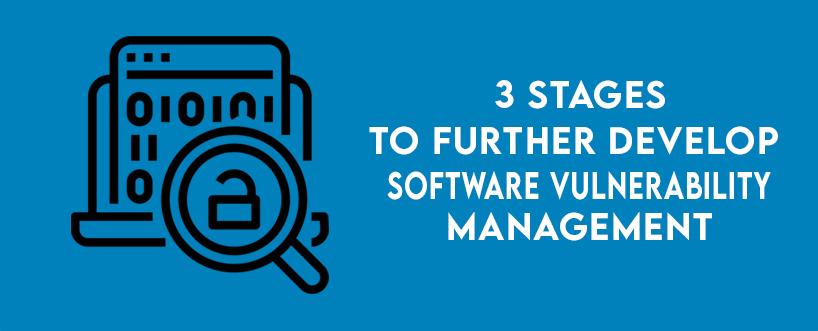3 stages to further develop software vulnerability management
The sheer number of weak software variants in a venture climate can be overpowering, making it trying to address them. The interaction expects time: to distinguish the requirement for an update, to make and test an effective update bundle, and afterward to convey that all through the climate. Accordingly, it isn't reasonable to accept that an association with a great many applications can basically stay up with the latest. All things being equal, security normally drives a remediation cycle, giving priorities to IT activities.
A more proficient cycle is needed to see, prioritize, and oversee software vulnerabilities—and lower the security risk to the whole association. Here are 3 stages to further develop vulnerability management.
1. Comprehend your end-of-life and end-of-support risk.
Cybersecurity risk is available all through the IT stack, however, the risk introduced by end-of-life or end-of-support (EOL/EOS) software is especially worth monitoring and mitigating. Any software that is arrived at EOL or EOS should be considered defenseless. Why? Since it is done getting the consideration important to qualify it as something else.
Across all classes, it is critical to keep up with itemized data about the particular forms and deliveries that you're utilizing. This can facilitate the ID of regions that need consideration. Monitoring EOL/EOS dates is likewise a significant segment of a general software resource management (SAM) exertion so you can remain in front of what forms of items in your current circumstance will arrive at EOL/EOS in the weeks ahead.
2. Smooth out IT decision-making.
The top test in IT decision-making is "insufficient acceptable quality information," cited as either to some degree a test or a critical test by more than 4 out of 5 (81%) of study respondents. The absence of this information eases back the cycles of making and executing decisions identified with vulnerability management.
Coordinating IT resource stock information into vulnerability and application justification endeavors is an essential piece of mitigating risk in an association and prioritizing key initiatives. You can't settle on decisions about what to ensure on the off chance that you don't have visibility into your resources.
3. Depend on threat intelligence.
Maybe than responding when an exploit hits the news or something imperative abruptly shows up as a critical occasion needing consideration, it's significant that IT activities set up a standard cycle for identifying, prioritizing, and remediating vulnerabilities as they are uncovered.
Two normal methodologies leave the majority of revealed vulnerabilities unaddressed:
- The most widely recognized approach to prioritize fix activity is by prioritizing dependent on criticality score or Common Vulnerability Scoring System (CVSS) score, which goes from 1 to 10. Be that as it may, this often doesn't give the best information on which to characterize remediation initiatives. Zeroing in on vulnerabilities with a CVSS score of at least 7 (which is generally taken on best practice) just addresses about half of those vulnerabilities that are exploited. Most exploits really have a "medium" CVSS score, somewhere in the range of 4 and 7.
- When organizations don't have great visibility into what vulnerabilities require their consideration, they normally center around notable applications (counting Adobe, Google, Java, Microsoft, and Mozilla). Zeroing in on vulnerabilities for the best 20 vendors, nonetheless, just addresses about 20% of exploits.
Today, threat intelligence is presently broadly liked, as it offers a more effective measurement for security and IT groups to prioritization of remediation endeavors. By depending on threat intelligence—which confirms, standardizes, and scores every vulnerability—you can zero in on vulnerabilities that are really being exploited in nature.
Website Designing Company choice should be made carefully who can give you best results in quick time. If you would like help and guidance with your web design, then you can contact us on +91 98716 88800 or if you prefer to, via email at sales@firstpointwebdesign.com
Contact us for a free website designing consultation and quote.
Hopefully, these tips will help you. Give us, Web Designing Company in Delhi, shout back, if you want a Website Design for your Business and we shall be more than happy to help you to achieve the same.
Registered
Office
www.firstpointcreations.com
G - 55, Masjid Moth, Greater Kailash - III, New Delhi - 110048, INDIA
business@firstpointcreations.com,
Call
Now: +91-+91-9871688800,




.jpg)

.png)
















